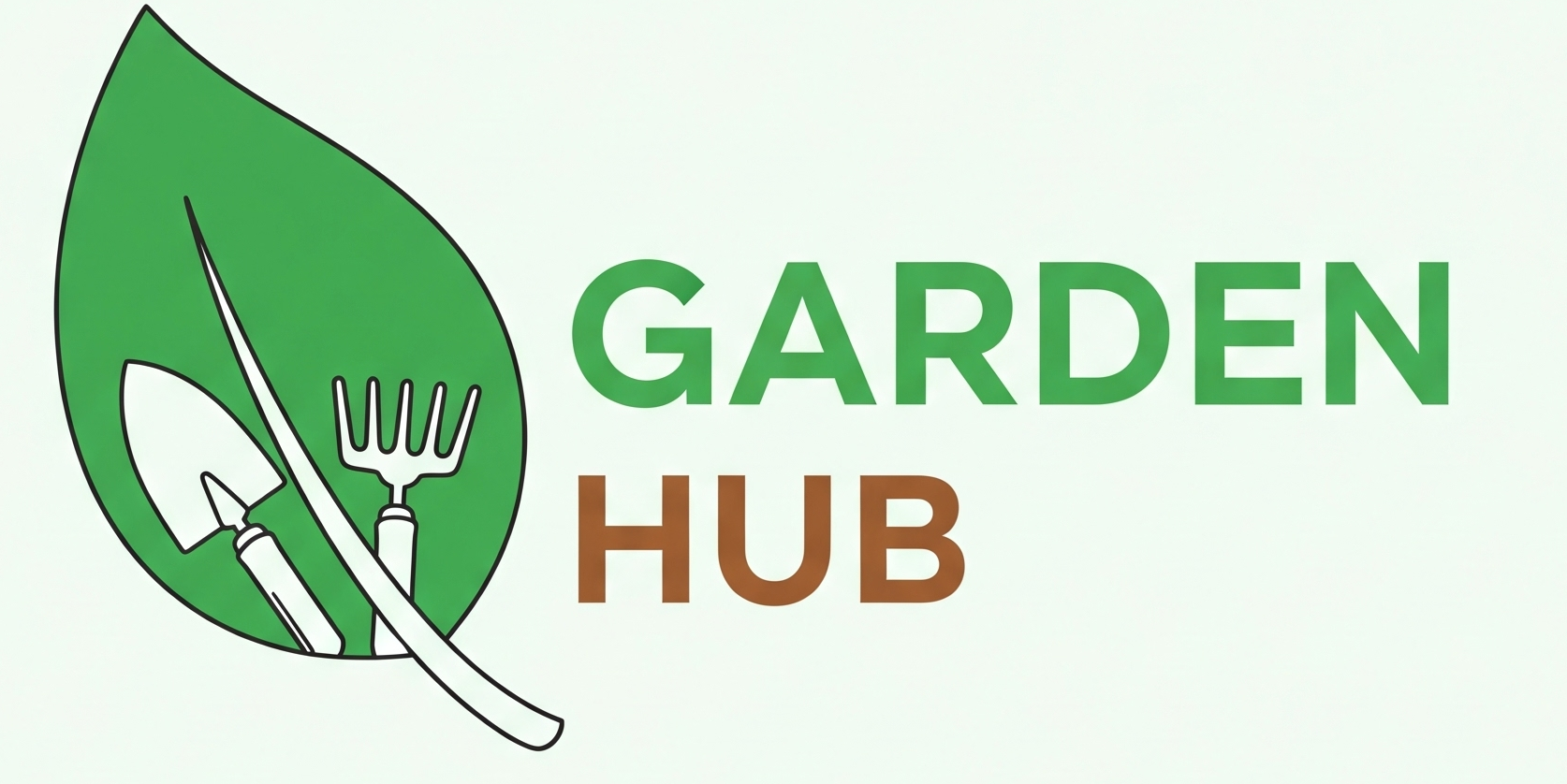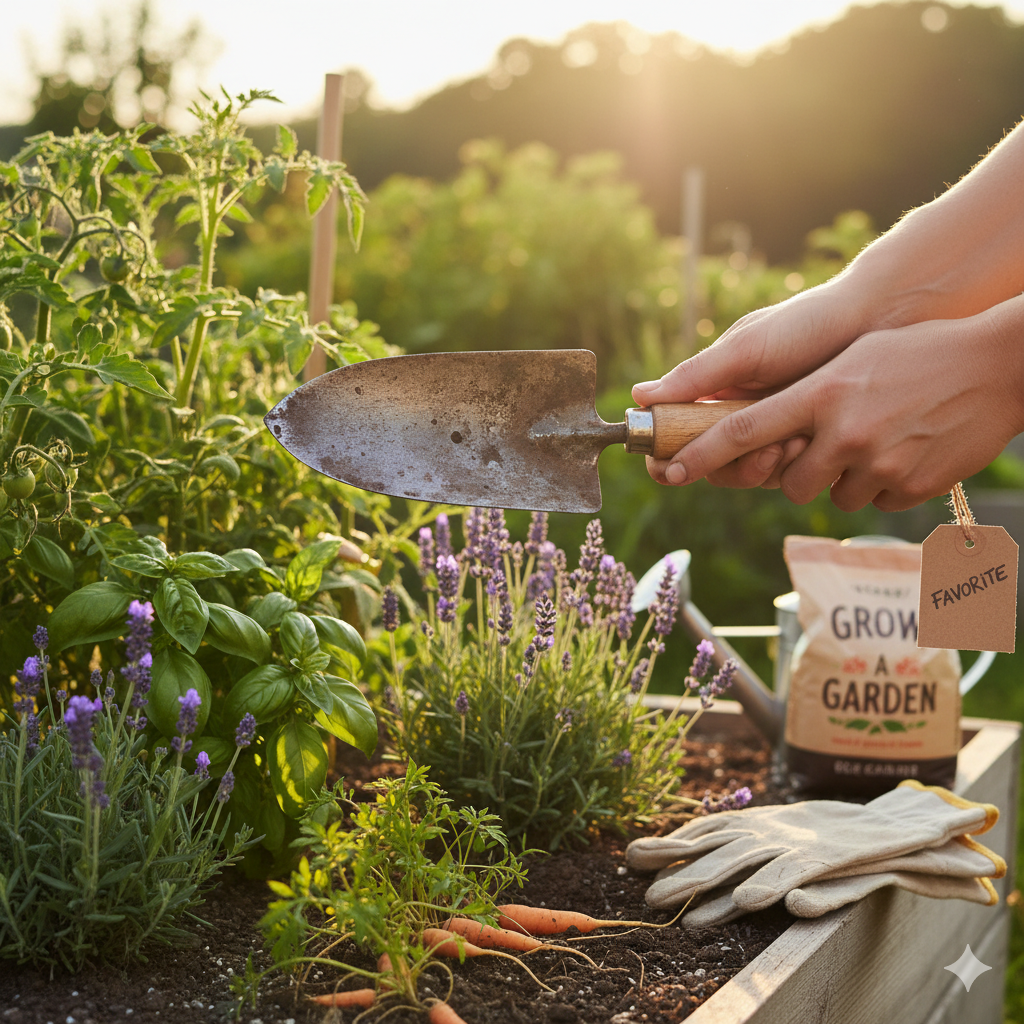Gardening is a relaxing way to connect with nature. It also lets you grow fresh fruits, vegetables, and colorful flowers at home.
Whether you are a beginner or already have some gardening experience, the right tools make a big difference. Using them properly can save time, improve results, and make gardening more enjoyable.
In this guide, we’ll share simple gardening tips to help you use your favorite tools effectively. Our step-by-step advice is beginner-friendly and easy to follow—even for non-native English speakers.
By the end, you’ll know how to get the most out of your tools and grow a healthy, beautiful garden.
Choosing the Right Tools for Your Garden
Pick the right gardening tools. Each task needs a different tool. Using the right one makes gardening faster and easier.
Here are the basic gardening tools for beginners to start your garden:
1. Shovel
A shovel is one of the most important tools in any garden. You use it for digging, planting, and moving soil. When buying a shovel, choose one that is strong and comfortable to hold. Make sure the blade is sharp enough to dig through soil easily. A shovel is used for many tasks, from digging holes to mixing compost into the soil.
2. Trowel
A trowel is a small hand tool that helps with digging small holes for planting seeds and seedlings. It’s perfect for planting in small spaces or pots. When using a trowel, be gentle and avoid digging too deep. It is also useful for transferring young plants from one pot to another or into your garden bed.
3. Rake
A rake is used to level soil and remove leaves or debris. After you plant seeds, a rake helps you smooth out the soil so it’s even. A rake is also important for cleaning up your garden in the fall when leaves fall from trees. A garden rake can be made of metal or plastic, but a metal one works best for moving heavy soil or debris.
4. Watering Can or Hose
Water is essential for growing healthy plants. A watering can is great for small areas, while a hose is more useful for larger gardens. Choose a watering can with a long spout for easy watering. If you use a hose, make sure it has a nozzle that gives a gentle spray to avoid washing away the soil.
5. Pruning Shears
Pruning shears are used to cut away dead or damaged parts of plants. Regular pruning helps plants grow healthier by encouraging new growth. You can use pruning shears to trim back plants, remove spent flowers, and shape bushes. Make sure to keep your shears clean and sharp to avoid damaging your plants.
Why These Tools Matter
Choosing the right tools makes gardening easier and more enjoyable. Tools like shovels, trowels, and watering cans can save time and effort. Take care of your tools, and they will last longer, making gardening more fun and efficient.
Preparing Your Garden Bed
Once you have your tools, the next step is to prepare the garden bed. The garden bed is where you plant your flowers, vegetables, or herbs. Proper preparation is crucial for healthy plant growth. Here’s how to prepare the soil:
1. Clear the Area
Start by clearing the area of weeds, rocks, or any other debris. Weeds can steal nutrients and water from your plants, so it’s important to remove them before planting. Use a hoe or rake to remove weeds and small plants. If you see large roots or tough weeds, use your shovel to dig them out.
2. Loosen the Soil
Soil that is compacted or too hard will make it difficult for plant roots to grow. Use your shovel or rake to loosen the soil. This helps create space for the plant roots to spread out and absorb water and nutrients. If the soil is heavy and sticky, mix in some compost to help loosen it up.
3. Add Organic Matter (Compost or Fertilizer)
To make the soil rich and healthy, add compost or organic fertilizer. Compost is made from kitchen scraps and yard waste, and it provides important nutrients for your plants. You can buy compost at the store or make your own at home. Spread a layer of compost over the garden bed and mix it into the soil with a shovel or rake.
4. Level the Soil
Once the soil is loose and enriched with compost, use your rake to level the surface. This will make it easier to plant your seeds or seedlings and ensure that water spreads evenly across the bed. A flat surface also prevents the soil from running off when it rains or when you water your plants.
5. Water the Soil
Before planting, water the soil lightly. Moist soil is easier to work with and helps your seeds settle in. Watering also helps the compost mix with the soil. Make sure not to overwater; the soil should be moist but not soaking wet.
Preparing the soil properly gives your plants a good start. Healthy soil leads to healthy plants, so take the time to get it right.
Planting Your Seeds or Seedlings
Now that your garden bed is ready, it’s time to plant. Planting is one of the most exciting parts of gardening, as it marks the beginning of new growth. Here’s how to plant your seeds or seedlings:
1. Check the Planting Instructions
Each type of plant has specific needs for how deep it should be planted and how much space it needs to grow. Always read the instructions on your seed packets or plant tags to make sure you’re planting them correctly. Some seeds need to be planted deeper in the soil, while others need just a little soil covering them.
2. Dig Holes for Planting
Use your trowel to dig small holes for your seeds or seedlings. Make the holes the right depth according to the instructions. For small seeds, make shallow holes. For larger plants, dig deeper holes to fit the roots comfortably.
3. Place the Seeds or Seedlings in the Holes
Carefully place the seeds in the holes. For seeds, cover them lightly with soil. For seedlings, gently place the plant into the hole and cover the roots with soil. Make sure the top of the plant is still above the soil so it can get enough sunlight.
4. Space the Plants
Make sure to space the seeds or seedlings according to the instructions. Giving plants enough space ensures they get the sunlight and nutrients they need to grow. Plants that are too close together may not grow as well.
5. Water the Plants
After planting, water the area gently to settle the soil around the roots. Make sure not to overwater, as this can cause the seeds to wash away or the plants to rot. Watering right after planting helps your plants start growing strong and healthy.
6. Mulch the Soil
Mulching helps keep the soil moist and prevents weeds from growing. You can use organic materials like straw, leaves, or wood chips for mulch. Apply a thin layer of mulch around your plants but leave space around the base of the plant to prevent the mulch from touching the stem.
Planting your seeds or seedlings carefully and giving them the right conditions will help them grow strong and healthy.
Caring for Your Garden
Once your plants are in the ground, you need to take care of them. Proper care helps your plants grow faster and healthier. Here’s how to care for your garden:
1. Watering
Water your plants regularly, especially in hot weather. Make sure the soil is moist, but avoid overwatering. If the soil is too wet, it can cause the roots to rot. Water the base of the plants, not the leaves, to keep them healthy.
2. Pruning
Pruning is important for keeping plants healthy. Use your pruning shears to cut back dead or damaged leaves and stems. Regular pruning helps the plant focus its energy on growing new, healthy parts. Don’t prune too much; remove only the parts that are dead or unhealthy.
3. Weeding
Weeds can steal nutrients and water from your plants. Remove weeds regularly to keep them from growing too close to your plants. Use a hoe to dig up larger weeds, or pull them out by hand for smaller ones.
4. Fertilizing
Plants need nutrients to grow. You can add fertilizer to give them a boost. Organic fertilizers are great for your garden because they help improve the soil. Be sure to follow the instructions on the fertilizer package, as too much fertilizer can harm your plants.
5. Protecting from Pests
Pests like insects or animals can harm your plants. Check your plants regularly for pests. If you find any, remove them by hand or use a natural pesticide. You can also place netting around plants to protect them from animals.
Enjoy Your Garden
Gardening is a rewarding and enjoyable hobby. By using the right tools, preparing your garden bed, planting properly, and caring for your plants, you can create a beautiful, thriving garden. Remember, gardening takes time and patience, but with practice, it becomes easier and more fun. Enjoy the process and the rewards of watching your garden grow!
FAQs
- What tools do I need to start a garden?
For beginners, the basic tools you’ll need are a shovel, trowel, rake, watering can, and pruning shears. These tools will help you prepare the soil, plant your seeds, and take care of your plants. - How often should I water my plants?
Water your plants when the soil feels dry. Be careful not to overwater, as this can harm the plants. Early morning or evening is the best time to water. - Can I grow vegetables in containers?
Yes, you can grow vegetables in containers. Make sure the container is large enough and has good drainage. Tomatoes, herbs, and peppers are great choices for container gardening. - How can I make my soil better for planting?
Adding compost or organic matter to your soil helps improve its structure and adds important nutrients for your plants. You can buy compost or make your own at home. - How do I know if my plants need more sunlight?
If your plants are stretching toward the light or growing tall and weak, they may need more sunlight. Most plants need at least 6 hours of direct sunlight each day.
With these tips, you’re on your way to becoming a successful gardener. Happy planting!

